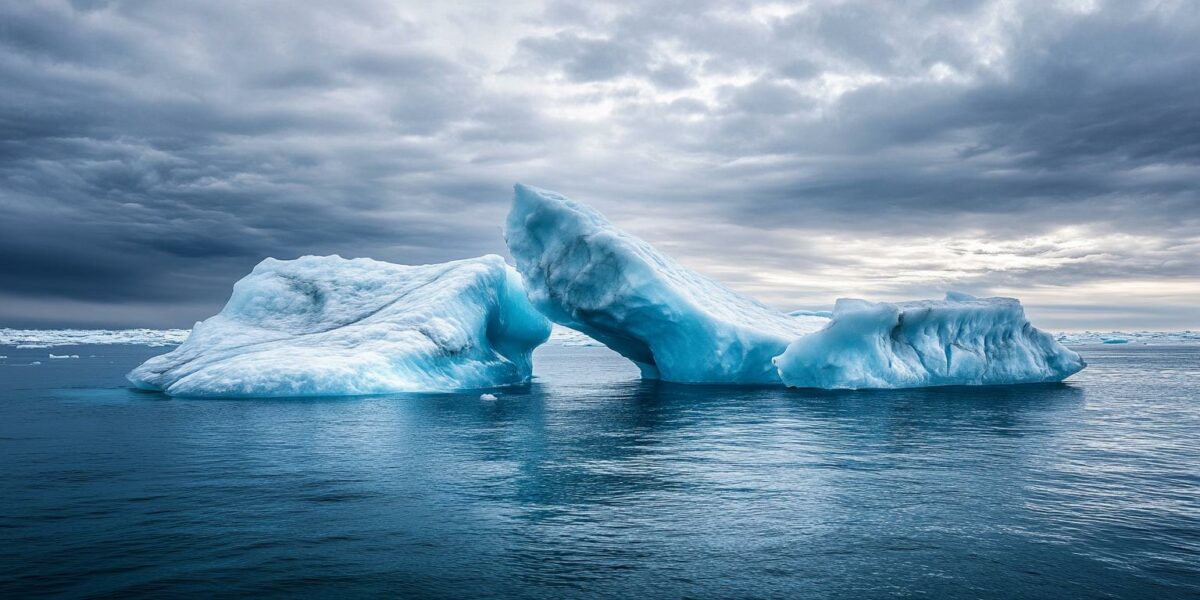NASA’s Groundbreaking ARCSIX Experiment
In an unprecedented effort, NASA’s ARCSIX experiment is probing the rapid decline of Arctic sea ice. The mission, known as the Arctic Radiation-Cloud-Aerosol-Surface Interaction Experiment, aims to understand how aerosols interact with the ice. This vital research could unlock new insights into the Arctic’s swiftly changing landscape.
Researchers have been soaring through the skies above Greenland, collecting invaluable data. “The Arctic’s changing really fast, faster than anywhere else on the planet,” said scientist Patrick Taylor. These changes harbor significant implications for areas far beyond the Arctic itself.
The stable atmosphere created by sea ice in the Arctic serves as an ideal environment for this research. Taylor noted, “When you have a stable atmosphere, it’s how you get these distinct layers.” Every flight has identified at least four unique aerosol layers, which ARCSIX is meticulously documenting and analyzing.
Aerosols play a critical role in the climate system. They act as cloud condensation nuclei, leading to increased cloud formation. Some aerosols reflect sunlight back into space, potentially cooling the climate, while others, like black carbon, absorb heat, contributing to warming.
Impact of Aerosols on Arctic Warming
The ARCSIX mission is essential for understanding the mechanisms behind Arctic warming. “We’re examining processes that can accelerate the warming of the Arctic,” Taylor explained. This warming is directly linked to the faster melting of sea ice, which has far-reaching consequences.
As sea ice melts more rapidly, it significantly contributes to rising sea levels. It’s estimated that 80% of Greenland is enveloped in ice. Even if emissions were halted today, the ongoing warming would continue to melt ice, potentially raising sea levels by about a foot over the next 50 years.
Researchers are eager to delve into the collected data and uncover new findings. “We’ll have some kind of first reflections of the data here in the next couple months,” Taylor mentioned. This data will gradually reveal new patterns and insights over the coming years.
Key factors being studied include:
- The interaction between aerosols and cloud formation
- The effect of different types of aerosols on sunlight reflection and absorption
- The subsequent impact on seasonal sea ice melt
Consequences of Melting Sea Ice
The rapid melting of Arctic sea ice has profound implications for the global climate. As ice diminishes, sea levels rise, leading to potential flooding and other environmental challenges. This underscores the urgency of understanding and addressing the factors contributing to this phenomenon.
Even with immediate emission reductions, the effects of past emissions will continue to influence the climate. The data from the ARCSIX experiment will be instrumental in modeling future climate scenarios and developing strategies to mitigate these impacts.
“We’re looking forward to piecing things together over time in ways that we haven’t thought of yet,” Taylor said. This highlights the ongoing nature of climate research and the need for continuous investigation.
The insights gained from the ARCSIX mission will not only advance our understanding of the Arctic but also inform broader climate policies and adaptation strategies worldwide.
Future Research and Implications
The ARCSIX experiment represents a significant step forward in climate science. By examining how aerosols affect the Arctic environment, researchers can better predict future changes and their global repercussions. This research is vital for both scientific understanding and practical policy-making.
The data collected will help scientists develop more accurate climate models, which are essential for anticipating future trends. This, in turn, aids policymakers in crafting informed strategies to combat climate change and protect vulnerable regions.
As the ARCSIX mission progresses, the research community anticipates numerous groundbreaking discoveries. These findings will not only enhance scientific knowledge but also contribute to global efforts to address climate change.
Ultimately, the ARCSIX experiment underscores the importance of continued investment in climate research. By deepening our understanding of the Arctic and its role in the global climate system, we can better prepare for and mitigate the impacts of climate change.



Andrew_Celestial
I hope this research leads to some actionable solutions. The future looks pretty grim otherwise.
claire
How will this data be used to create policies for combating climate change? Any concrete examples?
katherine
NASA to the rescue again! Can’t wait to see what new insights they uncover with ARCSIX.
paisleyspecter
Great article, but it’s frustrating that emissions reductions alone won’t stop the ice from melting. 😢
pepper
Is there any way the ARCSIX data can help predict extreme weather events caused by climate change?
scarlettdestiny
So, aerosols can both cool and warm the climate? That’s fascinating but also kind of scary.
ZoeyBeacon
Wow, NASA is doing some incredible work. Thank you for shedding light on this crucial issue. 🌍
isaac_wanderer
This is alarming! What does this mean for coastal cities in the next decade?